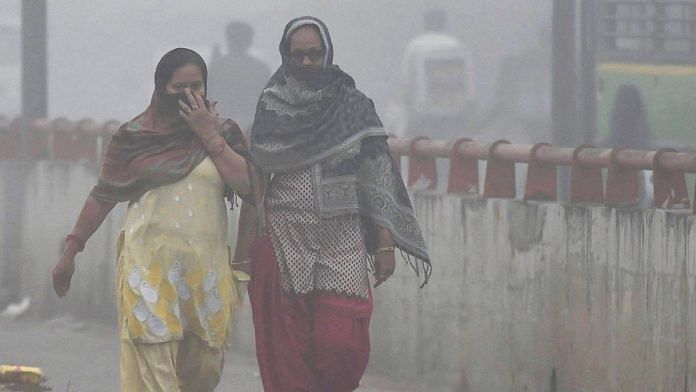New Delhi: In 2014, a study published in medical journal Lancet revealed that 14 Indian cities are among the world’s 20 most polluted. Professor A.R. Ravishankara, Professor, Colorado State University, and a co-author on the paper, says not much has changed since.
At the moment, Delhi is the centre of global attention, grappling with toxic smog. But 22 other cities in north India are also experiencing ‘severe’ pollution while the air quality is ‘very poor’ in 13 other cities.
Bathinda (401), Faridabad (479), Hisar (456), Kanpur (403) and Karnal (407) are among the cities with AQI in the ‘severe’ category. Muzaffarpur, Lucknow and Patna are some of the cities where the air quality is ‘very poor’.
Speaking to ThePrint about the worsening air pollution in north India, Ravishankara, a scientist specialising in chemistry and atmospheric sciences, highlighted major sources of such pollution, the issues with coal industry and what the administration can do to control the situation.
Also read: Delhi’s air pollution masks a class war that nobody is willing to talk about
Source of pollution
According to A.R. Ravishankara, government measures such as a ban on stubble burning and restrictions on the use of firecrackers are not enough to deal with air pollution in north India because these are episodic and limited to few times a year.
“Other major contributors appear to be dust from construction and cleaning, garbage burning, brick kilns, and coal-burning industries (like electricity production). The contributions of these depend on the specific places and regions,” he said.
According to the WHO, air pollution causes about seven million premature deaths every year, largely as a result of increased mortality from stroke, heart disease, chronic obstructive pulmonary disease, lung cancer and acute respiratory infections.
Ravishankara points out that particulate matter pollution has impacts on climate, offsetting India’s contribution to the fight against climate change.
“Ozone pollution affects crop yields and infrastructure because ozone is toxic and corrosive. Sulphur dioxide pollution (from coal-burning) produces acid rain which affects the aquatic system (kill fish), forests, etc,” he said.
Further, Ravishankara said Delhi’s meteorological conditions make matters worse for the city.
“When air is stagnant, what you put into the atmosphere stays there and accumulates. If you put the same amount of pollutants into the air in Bengaluru, it would not show up as that bad since air does not stagnate as much over Bangalore,” he said.
Also read: Write to Captain uncle, Khattar uncle about Delhi’s air pollution: CM Kejriwal tells school children
‘Avoid using coal’
Laying special emphasis on the coal powered industries, professor A.R. Ravishankara said there is a need to avoid the use of high sulphur coal which adds to air quality issues by making more particulate matter.
“If you can avoid using coal, you can avoid a lot of problems, you can avoid the issue of increase in carbon dioxide and improve the air quality,” he said.
He noted that while coal is cheaper than renewable sources available at present, the increased use of cleaner energy technology would help scale down costs.
“India’s energy needs are growing, and a very large section of India people still do not have electricity. So rightfully, we need to do the electrification, and along with electrification comes a lot of benefits, you reduce pollution in many ways,” said Ravishankara.
To do this, he advocates the use of locally sourced resources rather than starting new coal-driven power plants.
“Unlike many Western countries, people in India are still not completely reliant on having electricity all the time,” he said, adding that this can be used as an advantage.
“The fact that people have come up with a coping mechanism means that we don’t have to have the coal burning technology that constantly produces electricity,” said Ravishankara, who is also a member of the jury chair for Infosys Prize awarded by the Infosys Science Foundation.






